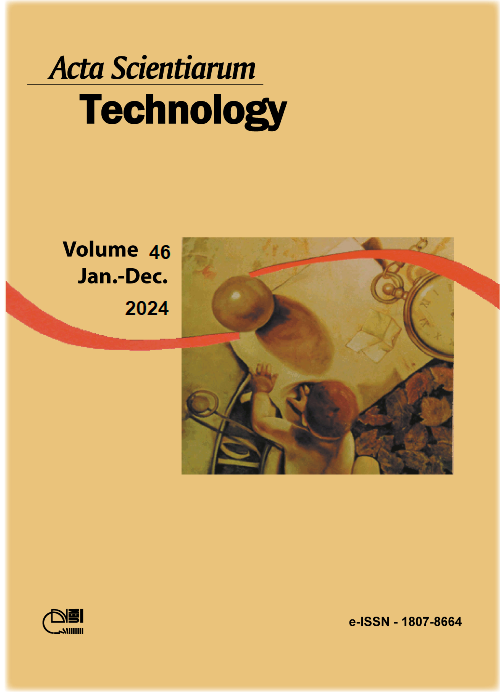Comparison between CFD simulation and affinity laws and analysis of the degree of reaction.
DOI:
https://doi.org/10.4025/actascitechnol.v46i1.64413Palavras-chave:
centrifugal pump impeller; numerical simulation; variable rotation; pressure.Resumo
Computational Fluid Dynamics (CFD) is a modern technology used to study fluid flow. Experimental methods for predicting the turbomachinery performance involve greater time consumption and financial resources compared to the CFD approach. For the centrifugal pump the impeller is the main component, as it transfers energy to the fluid. The pump flow rate and the total head are directly associated with the impeller rotation speed. The purpose of this paper is to present the analysis and comparison of numerical simulation results using Computational Fluid Dynamics of a centrifugal pump impeller under three different rotation speeds: 3500 rpm (nominal), 3100 rpm and 2700 rpm. The software used was ANSYS-CFX®, the turbulence model adopted was the Shear Stress Transport (SST). Eight operating points were simulated for each rotation. The simulation provided the characteristic curves, pressure distribution, and total and static pressure at the inlet and the outlet of the impeller. The degree of reaction was calculated. The results were compared by application of affinity laws, and showed agreement with them. The results also showed that the degree of reaction increased with increasing flow rate, and it was coherent with the backward curved blade impeller. The simulations show that the energy portions that make up the total energy transferred by the impeller agree with the affinity laws.
Downloads
Downloads
Publicado
Como Citar
Edição
Seção
Licença
DECLARAÇíO DE ORIGINALIDADE E DIREITOS AUTORAIS
Declaro que o presente artigo é original, não tendo sido submetido í publicação em qualquer outro periódico nacional ou internacional, quer seja em parte ou em sua totalidade.
Os direitos autorais pertencem exclusivamente aos autores. Os direitos de licenciamento utilizados pelo periódico é a licença Creative Commons Attribution 4.0 (CC BY 4.0): são permitidos o compartilhamento (cópia e distribuição do material em qualqer meio ou formato) e adaptação (remix, transformação e criação de material a partir do conteúdo assim licenciado para quaisquer fins, inclusive comerciais.
Recomenda-se a leitura desse link para maiores informações sobre o tema: fornecimento de créditos e referências de forma correta, entre outros detalhes cruciais para uso adequado do material licenciado.















